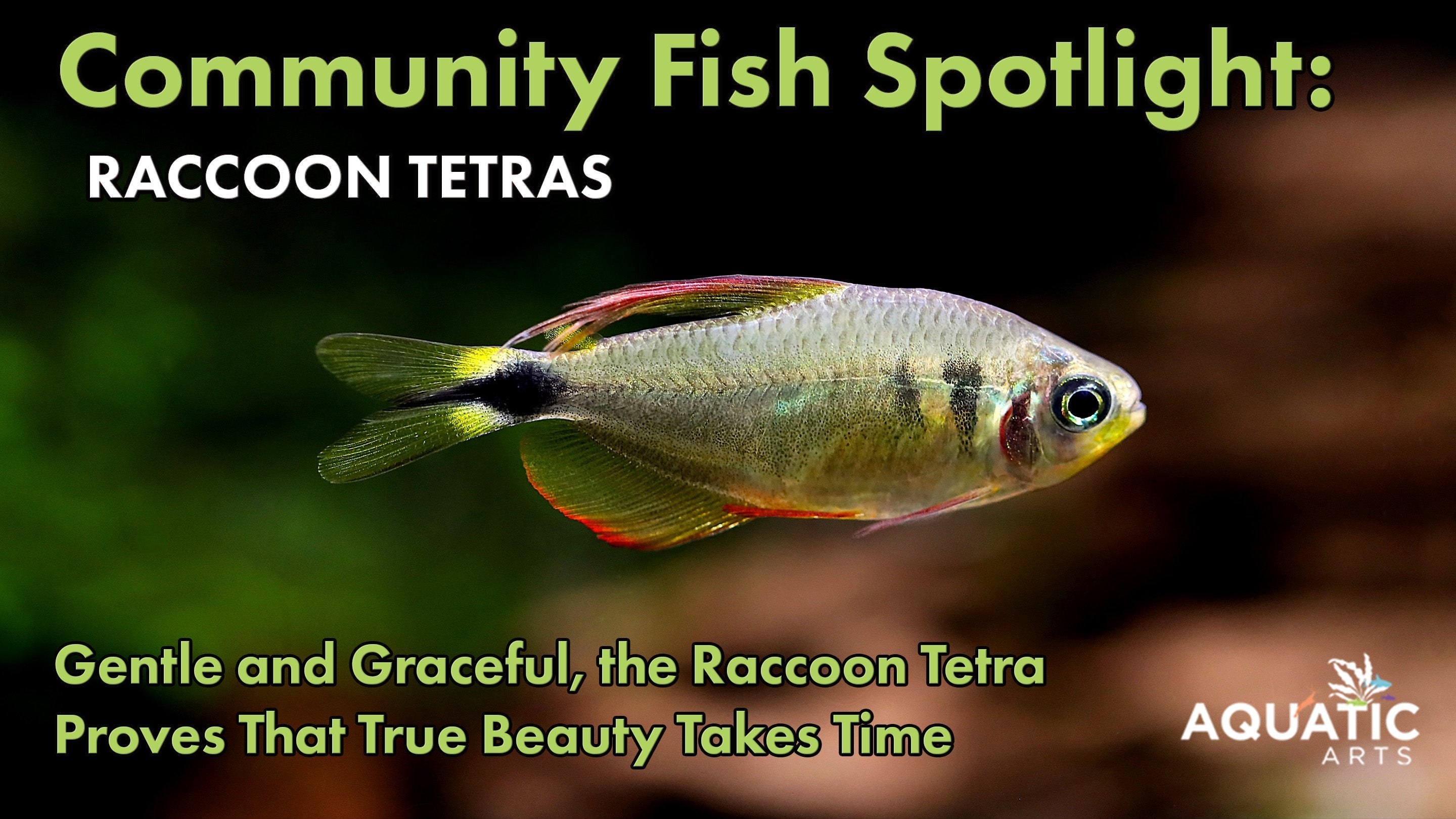Transform Your Tank: Whimsical Aquatic Plants to Bring Magic Home

Discover how to create a magical underwater landscape with unique and enchanting aquarium plants that will captivate your senses and elevate your home aquarium.
Creating a captivating underwater world in your home aquarium goes beyond just selecting vibrant fish. The right plants can add an element of whimsy and enchantment, transforming a simple tank into a magical aquatic landscape. In this article, we'll explore some unique and whimsical aquarium plants that we currently have in stock, perfect for adding a touch of fantasy to your aquatic haven.
The Enchantment of Aquatic Plants
Adding plants to your aquarium can significantly enhance its aesthetic appeal. Live plants not only improve water quality by absorbing harmful nitrates and providing oxygen but also offer natural habitats for fish. Certain plants can evoke images of fairy tales, enchanted forests, or underwater gardens, adding a whimsical touch to your aquarium.
Whimsical Aquatic Plants ideas
1. Marimo Moss Balls (Aegagropila linnaei) These unique, velvety green spheres are a favorite among aquarists. They resemble little green clouds floating gently in the water. Their round shape and gentle movement can create a playful, almost magical atmosphere. Marimo Moss Balls are low maintenance, thrive in a variety of water conditions, and need occasional gentle rolling to maintain their shape.

Marimo Moss Balls (Aegagropila linnaei): Known to symbolize love and longevity in Japanese folklore, these moss balls add a touch of cultural charm to your aquarium. They also help reduce nitrates and improve water quality.
2. Red Root Floater (Phyllanthus fluitans) This floating plant features red-tinted leaves and delicate roots that dangle down into the water. The vibrant red roots create a striking contrast against the green leaves, resembling tiny floating islands. Red Root Floaters require moderate lighting and regular trimming to prevent overgrowth.

Red Root Floater (Phyllanthus fluitans): These floaters are not only beautiful but also act as a natural water filter, absorbing excess nutrients and preventing algae growth.
3. Java Fern (Microsorum pteropus) Known for its elegant, arching leaves, the Java Fern is a versatile and hardy plant. Its leaves can resemble the flowing fronds of an underwater forest, adding a touch of mystery and depth to the tank. Java Ferns have low light requirements and can be attached to rocks or driftwood.

Java Fern (Microsorum pteropus): Java Ferns are slow-growing plants that can thrive in low-tech setups without CO2 injection, making them ideal for beginners.
4. Dwarf Hairgrass (Eleocharis parvula) This grass-like plant creates a lush, green carpet across the bottom of the tank, perfect for creating an underwater meadow or fairy-tale landscape. Dwarf Hairgrass needs moderate to high lighting and CO2 supplementation for optimal growth.

Dwarf Hairgrass (Eleocharis parvula): This plant is excellent for creating foreground coverage in your aquarium, providing hiding spots for small fish and invertebrates.
5. Purple Cabomba (Cabomba pulcherrima) This plant has feathery, purple-tinged leaves that create a beautiful, intricate pattern. Its delicate, lace-like appearance adds a touch of elegance and fantasy. Purple Cabomba requires high lighting and nutrient-rich water.

Purple Cabomba (Cabomba pulcherrima): In addition to their aesthetic appeal, Purple Cabomba plants are effective oxygenators, enhancing the overall health of your tank.
6. Red Tiger Lotus Aquarium Lily (Nymphaea zenkeri) This plant produces large, reddish leaves that can float on the water’s surface. The vibrant red hues and lily pad-like leaves add a dramatic and exotic look to any aquarium. Red Tiger Lotus prefers moderate to high light and nutrient-rich substrate.

Red Tiger Lotus Aquarium Lily (Nymphaea zenkeri): Red Tiger Lotus can flower under the right conditions, adding a rare and beautiful bloom to your underwater garden.
7. Banana Plant (Nymphoides aquatica) Known for its banana-shaped roots, this plant produces bright green leaves that float on the surface. Its unusual roots and floating leaves make it look like something out of a storybook. Banana Plants thrive in a variety of conditions, but do best in moderate light.

Banana Plant (Nymphoides aquatica): The unique root structure of the Banana Plant stores nutrients, making it resilient to changes in water conditions.
8. Cardinal Plant (Lobelia cardinalis) This plant features striking red or purple stems and bright green leaves. The contrast of colors adds a vibrant and dynamic element to the aquarium. Cardinal Plants need moderate light and regular trimming to maintain their shape.

Cardinal Plant (Lobelia cardinalis): Cardinal Plants can also be grown emersed, displaying even more vibrant colors and adding versatility to your aquascaping.
9. Cryptocoryne Pink Flamingo A rare and stunning plant with pink leaves that add a pop of color. Its unique color and texture make it a standout in any tank. Cryptocoryne Flamingo prefers low to moderate light and a nutrient-rich substrate.

Cryptocoryne Flamingo: Despite its delicate appearance, Cryptocoryne Flamingo is a hardy plant that can adapt to a wide range of water conditions.
10. Giant Duckweed (Spirodela polyrhiza) This floating plant forms a dense mat of tiny green leaves on the water’s surface, creating a fairy-tale pond effect. Giant Duckweed is easy to care for but needs to be controlled to prevent overgrowth.

Giant Duckweed (Spirodela polyrhiza): This plant can help reduce light penetration in the tank, providing shaded areas that can benefit fish and prevent algae blooms.
11. Madagascar Lace Bulb (Aponogeton madagascariensis) This plant has intricate, lace-like leaves that are truly unique. Its delicate and ethereal appearance adds a touch of sophistication and fantasy. Madagascar Lace Bulbs require high light and clean water to thrive.

Madagascar Lace Bulb (Aponogeton madagascariensis): The intricate leaf structure of this plant provides excellent hiding spots for shy fish and adds a dynamic visual element.
12. Dwarf Water Lettuce (Pistia statiotes) This floating plant has rosettes of light green leaves with a velvety texture. Its soft, floating leaves can create a serene and magical surface cover. Dwarf Water Lettuce prefers moderate to high light and should be thinned regularly.

Dwarf Water Lettuce (Pistia statiotes): Dwarf Water Lettuce helps to absorb harmful toxins like ammonia and nitrates from the water, promoting a healthier environment for your fish.
Designing Your Whimsical Aquarium
When arranging these plants, consider the visual impact and overall theme you want to achieve. You can create themes such as a fairy garden, enchanted forest, or magical grotto. Let your creativity guide you, as there’s no right or wrong way to create a whimsical aquarium. Experiment with different combinations and placements to see what works best for your tank.
Maintenance Tips
Regular maintenance is essential to keep the plants healthy and the aquarium looking its best. Here are some general care tips for each plant mentioned:
- Lighting: Ensure you have the right lighting conditions for each plant. Some plants require high lighting, while others thrive in low to moderate light.
- CO2 and Nutrients: Consider CO2 supplementation and a nutrient-rich substrate for plants that need it.
- Trimming: Regularly trim plants to prevent overgrowth and maintain their shape. There are tools that work best in water for Aquascaping.
- Water Quality: Keep the water clean and monitor parameters to ensure a healthy environment for your plants.
Q&A: Frequently Asked Questions
Q1: What are the best lighting conditions for whimsical aquatic plants?
A1: The lighting needs vary by plant. While some, like Java Fern and Cryptocoryne Flamingo, thrive in low to moderate light, others like Purple Cabomba and Dwarf Hairgrass require high lighting. Always check the specific needs of each plant to ensure optimal growth.
Q2: How can I prevent algae growth in a planted aquarium?
A2: To prevent algae growth, maintain a balanced light schedule (8-10 hours a day), avoid overfeeding fish, and perform regular water changes. Additionally, using fast-growing plants can help outcompete algae for nutrients.
Q3: Do I need CO2 supplementation for my aquarium plants?
A3: While not all plants require CO2 supplementation, it can significantly enhance the growth and health of high-light plants like Dwarf Hairgrass and Purple Cabomba. CO2 systems can be beneficial for creating a thriving planted tank.
Q4: How often should I trim my aquarium plants?
A4: Trimming frequency depends on the plant species and growth rate. Fast-growing plants like Red Root Floater may need weekly trimming, while slower-growing plants like Madagascar Lace Bulb can be trimmed less frequently. Regular trimming helps maintain plant health and desired tank aesthetics.
Q5: Can I mix whimsical plants with other types of aquarium plants?
A5: Absolutely! Mixing whimsical plants with other varieties can create a diverse and visually appealing aquarium. Just ensure that the plants have similar care requirements regarding light, nutrients, and water conditions.
Conclusion
Transforming your aquarium into a whimsical underwater world is a delightful way to bring a touch of magic into your home. By selecting unique and enchanting plants, you can create a captivating environment that will mesmerize both you and your aquatic friends. Visit our store to explore our selection of whimsical aquatic plants and start your journey towards an enchanting aquarium today.
- Visit our store to check out the available plants.
- Share your whimsical aquarium creations on social media and tag our store..
By following these guidelines, your aquarium can become a whimsical and enchanting underwater world that you and your aquatic friends will enjoy.




